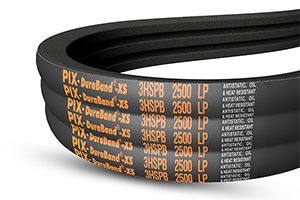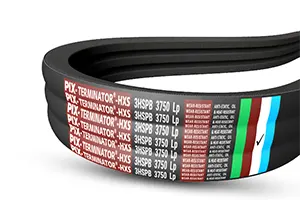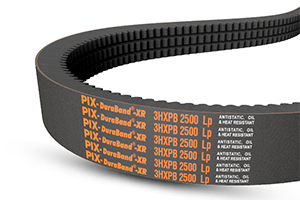Banded Belts
Home - Banded Belts
Banded Belts
Banded Belts are two or more V-Belts, joined together to form a single unit.
Banded Belts are an excellent solution to the drives with longer centre distance or drives with pulsating and high shock loads.
SRMA-DuraBand® Banded Belts are available in Classical, Wedge and Narrow sections in Wrap and Cogged constructions.
The highly engineered tie-band in the Banded Belts which runs on the top, permanently bonds individual V-Belts together, enabling the Belts to function as a single unit with even load distribution and wear.
Banded Belts are widely used in heavy-duty machinery such as forestry woodcutters, wood chippers, mining machinery, etc.
FAQ - Banded Belts
Banded Belts, also known as multiple V-Belts or joined V-Belts, are Belts made by joining multiple V-Belts together side by side, creating a single, wider belt. These bands can be joined by adhesives, stitching, or other methods.
They are utilized in heavy machinery, industrial equipment, HVAC systems, and applications requiring higher horsepower transmission, increased stability, and resistance to belt turnover.
Banded Belts are formed by joining multiple V-Belts together to create a wider belt, offering increased stability, higher horsepower transmission, and reduced slippage compared to individual V-Belts.
They are usually made from rubber compounds reinforced with materials like polyester, aramid fibers, or other reinforcing elements, similar to individual V-Belts
They offer increased stability, reduced vibration, higher horsepower transmission capabilities, and the ability to handle heavier loads compared to individual V-Belts.
Replacement intervals depend on usage, load, environmental conditions, and manufacturer recommendations, similar to individual V-Belts. Regular inspections and adherence to maintenance schedules are crucial.
Signs include visible wear, cracking, loss of tension, increased noise during operation, reduced efficiency, or reaching the recommended service life specified by the manufacturer.
Replacing Banded Belts requires specific tools and expertise due to their construction. It’s recommended to have trained technicians or maintenance personnel handle replacements.
Regular inspection for wear, proper tension adjustment, alignment checks, and following manufacturer-recommended maintenance schedules are crucial for maximizing belt lifespan and efficiency.
Banded Belts are designed to function in various temperatures and conditions but may be affected by extreme heat, cold, moisture, or exposure to certain chemicals.





